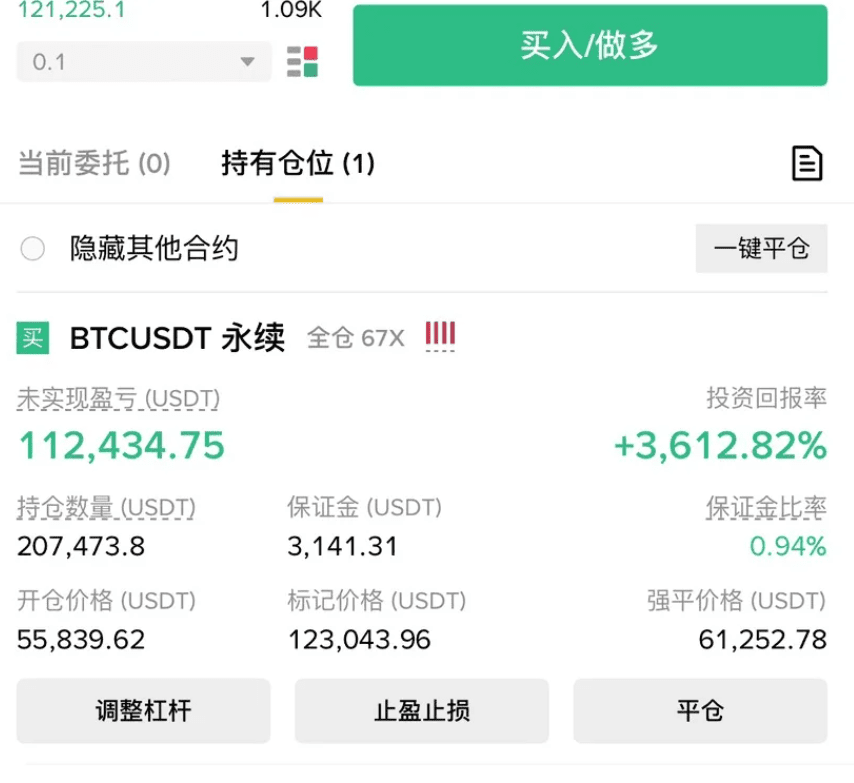In the ever-changing investment market, some people with heavy capital fail miserably, while others with small amounts of funds can achieve leaps in wealth. Recently, during a market crash, Liangxi made a staggering profit of 10 million by shorting with just 10,000, which exploded like a bomb in the circle, leaving countless people in awe. Why could he achieve such incredible returns with shorting? Behind this, the 'rolling position' strategy played a crucial role.

When it comes to rolling positions, one cannot help but mention Tony. You might be a bit unfamiliar with this name, but in the early days of the cryptocurrency circle, he was a super influencer, much like Liangxi and Hanbalongwang. In 2021, Mage Tony started with a principal of 50,000 yuan, relying on high-leverage trading and rolling position strategies, and within just one year, he amassed 20 million in profits—such achievements are enough to attract attention.
On the internet, it is not uncommon to see influencers earning millions, but Tony is fundamentally different from them. If I were to find a reference, I think he is quite similar to a wizard, possessing unique insights into the market and strong execution ability.
So what exactly is rolling positions? Simply put, it's about using small funds to make multiple attempts, leveraging high leverage to double profits in a successful market trend. Although the process sounds thrilling, the core is actually about controlling risks, precise judgment, and strict execution.
Let me give you an example of how $300 can roll into tens of thousands of dollars. Suppose you have $300 (about 2000 RMB), and you only take out $10 to open a position each time, choosing 100x leverage. Yes, that's 100x leverage! This means that any 1% fluctuation will be amplified 100 times, resulting in huge gains or losses.
First, the key is to firmly establish your direction—whether you are bullish or bearish. Before placing an order, you must make a judgment and have the execution power, without arbitrarily changing your direction. If you lose dozens of times in a row, it may mean your direction is wrong; at this point, it's best to stop and reflect, or even temporarily exit the market and wait for a reversal.
Assume you are on your 20th operation, and the market finally begins to move as you expected. As long as the price rises or falls by 1%, $10 can turn into $20. At this point, take out $10 as profit, and continue to invest the remaining $20; this is 'rolling positions.'
If there is a 1% fluctuation again, $20 will turn into $40. At this stage, the cumulative fluctuation is about 2%, and the capital has quadrupled. Continuing this strategy, with the common 10% fluctuations of Bitcoin in a month, the principal is likely to quickly roll into thousands or even tens of thousands of dollars.
An important principle of rolling positions is to set clear goals. For example, stop when you earn $5,000 or $10,000, and take out profits to reduce risk. This helps lock in gains and avoids liquidation due to excessive greed, wasting your previous efforts.
The consequences of greed are terrifying. If you do not take profits in time and continue to roll over, a single misjudgment could lead to liquidation, wiping out all previous gains. Therefore, controlling desires and setting profit-taking points are key to safe trading.
So when should you start rolling positions again? If you have already earned tens of thousands of dollars through rolling positions, it might be wise to stop and wait. Wait for a clear market trend, such as a major fluctuation cycle of a certain cryptocurrency. At this time, you can use $500 as the principal and still take out $10 for 100x leverage operations. With patience, once a unilateral trend appears, there may be opportunities for several times or even dozens of times the return within a few days.
However, it is important to note that such opportunities are not common and may take months or even a year or two to encounter a real big market. Moreover, the ups and downs in the market and false breakouts bring unpredictable risks. Therefore, successful rolling positions rely not only on precise judgment but also on sufficient patience and discipline.
Many people frequently face liquidation when trading contracts, and the reasons are generally a few points: unable to resist the urge to open positions at any time, frequently ignoring the overall market trend; lack of patience, wanting to make a lot of money in a short time, unwilling to wait for the right opportunity; having a trading plan but not executing it, with emotional trading ultimately leading to liquidation.
When trading contracts, greed and impulse are the biggest taboos. You must strictly execute the trading plan, and even if market fluctuations make you restless, you must firmly hold back. Otherwise, the final outcome is likely to be liquidation, or even losing everything.
As a high-risk, high-return strategy, rolling positions are suitable for disciplined and patient investors. Using small funds to leverage large profits relies on accurately judging the market, strictly executing plans, and not being greedy. If you can control these factors, rolling positions can indeed be a good way to quickly accumulate funds.